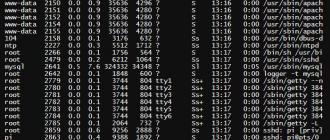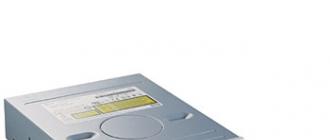This video shows what devices can transmit wi-fi for many kilometers. This need arises when you need to use your Internet in the country, at work, at school, at least anywhere in the far-off, although within certain limits. In this case, the test showed 20 km. The video will check at what distance and speed it will be possible to transmit the Internet signal using the specified devices. All the necessary equipment can be purchased at this Chinese store. Save it by installing the plugin on Google Chrome: 7% of purchases.
Choosing a wi-fi access point
First, select the appropriate wi-fi access point. The most promising is the equipment company Ubiquiti. The cost is about $ 100 for new equipment, two times less for used. This is nanostation logo m5, nanobridge M5, airgrid M5, nanobeam m19. These access points are highly reliable, for which they are loved by communication providers. Unlike other professional equipment, they are easy to set up. There is a wide choice for different distances. By the way, you can significantly increase the range of the nanostation by screwing it to the satellite dish. Of the disadvantages can be noted relatively high cost.
From cheaper options tp-link equipment. For example, a sufficiently powerful antenna is built into this outdoor access point, in range it is even stronger than the nanostation. But tp-link is less reliable. software. Therefore, once a month the equipment may hang. Restoring the Internet will require a reboot. That is why they do not like providers. But for the personal Internet, they are quite suitable.
There are even cheaper options from Chinese manufacturers. But they are not only less reliable, but also have more weak antennas. If you wish, you can make a homemade Wi-Fi antenna. The channel has a detailed video tutorial on how to do it.
How to connect a wi-fi access point
Now let's see how to connect the access point correctly. Included with wifi point Access power supply goes, but the power cable does not need to be pulled to the access point, as POE technology is used here. The supply voltage is transmitted through the same cable that the Internet is transmitted through. Therefore, to connect the access point you need 8 core twisted pair. One end is connected directly to the access point, and the other to the power supply unit POE. The second free socket on the power supply unit is connected by any twisted pair, at least 8 wire, at least 4 wire, with a computer for further configuration.
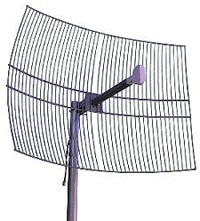

How to set up a nanostation for ultra-long work
We connect it to the network, and after the LEDs light up, we recommend resetting it to the factory settings by holding the Reset button for 10 seconds. Now we bring down in the settings network card 192.168.1.22. I open any browser and write in the address bar: 192.168.1.20.
Press Enter and get to the input settings nanostation. In the field login and password we write ubnt. In the country column, select the compliance test. This will allow the use of alternative channels and maximum power. In the Wireless tab, you can select the mode in which the nanostation will work. In the first mode, we can connect to other wi-fi networks. The second mode is the so-called access point mode, that is, you can distribute wi-fi. like an ordinary router. Enter our name wifi network, password. The width of the channel, select 20 megahertz and prescribe the frequency channel on which the Internet will be distributed.
We recommend pre-scanning the range and choosing WiFi channelso as not to interfere with providers operating in your area. In some areas, permission to use the 5 gigahertz range is required. In some areas, permission is required to use an external WiFi antenna. In the Network tab, select the mode. If you leave the bridge, your network will be extended wirelessly. If you select SOHO Router, then the destination will work as home router, and you can connect to it using phones and laptops. Apply changes.
Further you watch the instruction on installation and fastening and other moments on installation over distant wai fay from 3 minutes.
A simpler scheme for 2 km with all the details.
Aug 04 2016
In the Russian Federation, any network operating outside the building or production area, or exceeding a certain threshold in signal power, must be registered.
How to legitimize a wireless network
There is also a long series of exceptions in the law regarding the height of devices, their purpose.
A number of obstacles and double interpretations explain the opinion that has developed among hardware developers that a long-range Wi-Fi antenna must be passive.
This certainly reduces energy costs and makes the electromagnetic background of the area more favorable.
And how to make a passive radiator amplify a signal has been known for a long time - in the directivity pattern, one or several sharply selected directions are created along which the main part of the energy will propagate.
It is something like a narrow river bed. As long as the shores are far apart, the current is calm. But it is only necessary to drive the stream into a narrow sleeve, as the water begins to boil, to flow faster, the speed of movement increases. (See also: DIY Wi-Fi Directional Antenna)
A long-range Wi-Fi antenna operates on a similar principle, transmitting the entire power supply on the right track.
The gain, expressed in isotropic decibels (dBi), just characterizes this property of the radiator - to increase the energy density in certain directions.
Immediately, a restriction appears - the coverage area is sharply narrowed. But the dignity is obvious - full liquidity in the eyes of the law, since the total radiated power usually falls under the restrictions.
Those who need an even higher signal level buy additional amplifiers and legally legitimize their purchase in a separate order.
 Do not forget about the fact that some transmitters are subject to restrictions on eirp.
Do not forget about the fact that some transmitters are subject to restrictions on eirp.
This is a parameter that, from a completely innocuous access point, can make an object subject to mandatory licensing.
The fact is that it is the product of the total power supplied to the antenna by its gain. What is the point?
For example, with some power emitted by an omnidirectional antenna, a license is not needed.
When replacing with a narrowly focused model, a situation may arise when the EIRP goes beyond what is permitted. The probability of this is higher, the greater the gain of the product.
This issue was discussed in such detail, since no organization has already been penalized for failing to comply with the elementary requirements imposed on wireless networks. Outdoor antenna Wi-Fi can become a real stumbling block when ill-considered use.
The principles of long-range antennas
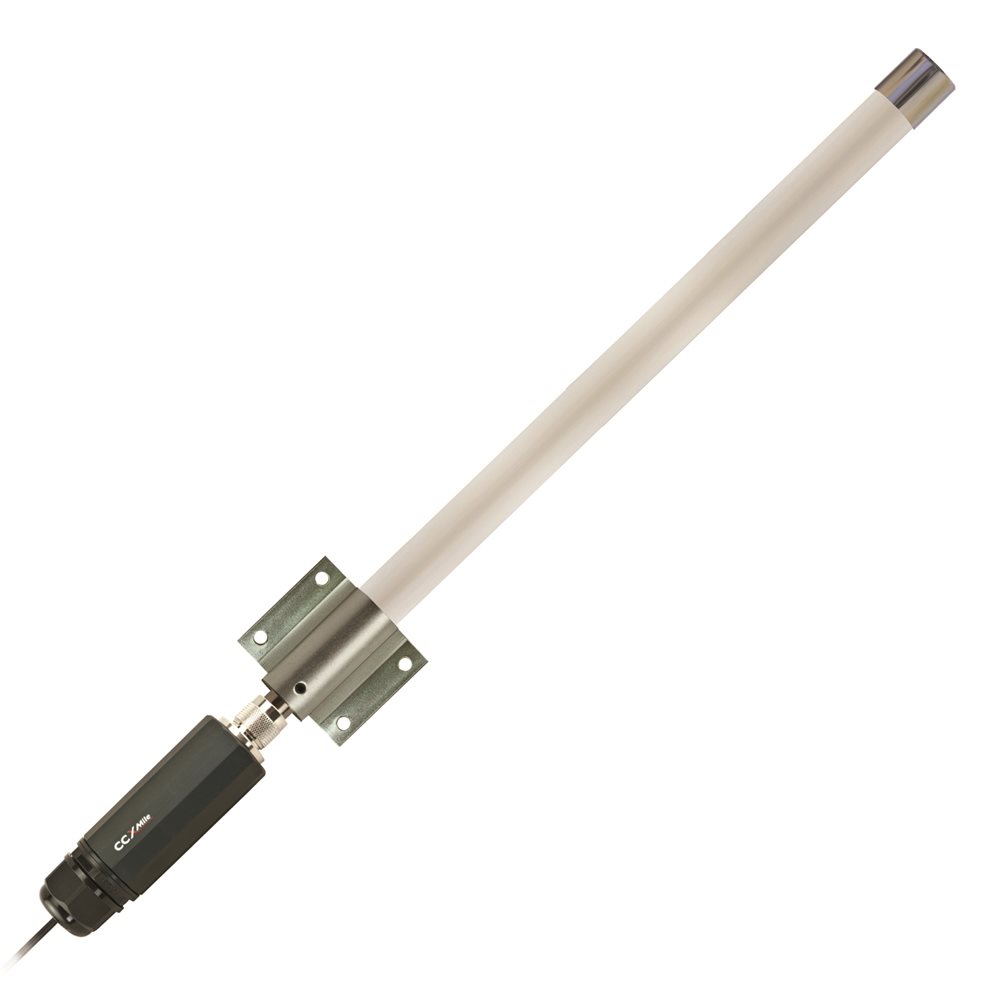 The implementation of narrowed radiation patterns goes in two ways:
The implementation of narrowed radiation patterns goes in two ways:
- The use of reflectors special form.
- Creating phased arrays.
Reflector antennas
The scientific terms translated into understandable to most people do not look frightening. The reflector is nothing more than a reflector.
The well-known satellite dishes use for this purpose a portion of the surface of a paraboloid with an emitter placed in focus.
The well-known law of optics is used: all rays incident perpendicular to the lens are collected at one point. A parabolic antenna reflector is a lens for electromagnetic waves. (See also: Homemade Wi-Fi antenna)
For an engineer, the further course of thought is obvious, but most people, usually in this case, ask a curious question: if the rays fall in parallel, how does this relate to the transmission and the radiation pattern?
Antenna properties are absolutely identical for both directions of movement of electromagnetic waves.
Radiated energy will be distributed by parallel rays, and this is the narrowing of the radiation pattern. The entire flow will go in the direction perpendicular to the opening of the reflector, while the range of the Wi-Fi antenna increases.
To understand this point, it is useful to imagine a spotlight beating thinly over a long distance.
Antenna arrays
A coherent theory of phased antenna arrays has not yet been created, but practical developments, including those of domestic institutions, allow us to achieve excellent results using methods based on empirical research.
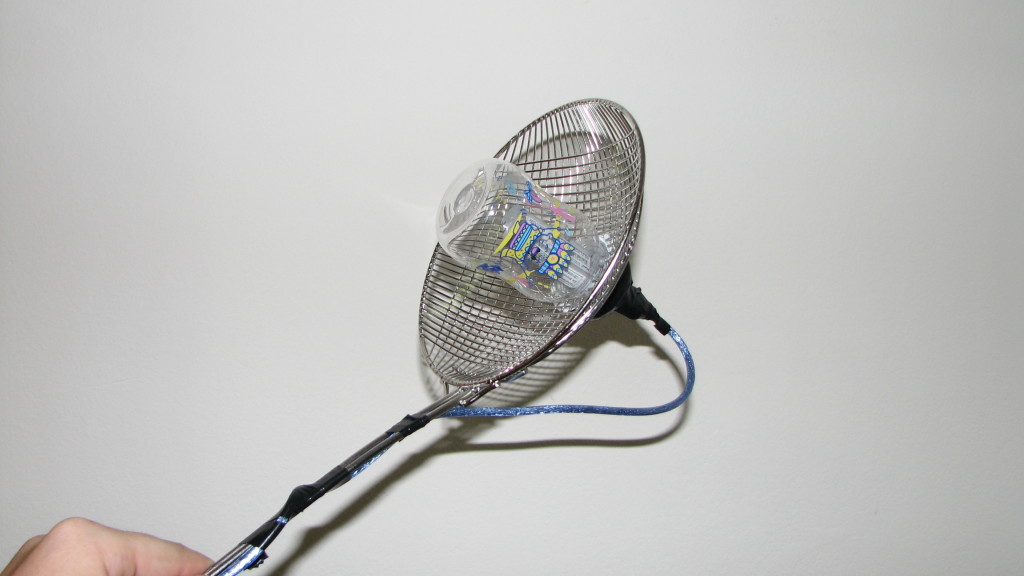 Scientists take and use the well-known pumpkin technique. In fact, it still looks more reasonable from a theoretical point of view, but the essence is exactly that.
Scientists take and use the well-known pumpkin technique. In fact, it still looks more reasonable from a theoretical point of view, but the essence is exactly that.
It is proved that the emitters located in a certain order have a total radiation pattern that is narrower than separately.
It is accepted - but there are exceptions - to place them in even rows, as in the auditorium seat. Narrowing occurs in a plane perpendicular to the line of emitters.
The further course of design thought should be clear. For example, four plates — also called patches — at the corners of a square narrow the radiation pattern in the vertical and horizontal directions. It is on this principle that Wi-Fi TP Link TL-ANT2414A antennas work.
Combined options
The thoughtful combination of a reflector and even rows of emitters gives excellent results. Such is the well-known two-circuit design for the UHF range on square emitters arranged symmetrically in the form of a figure eight.
Due to the equivalence of two perpendicular to the plane of the location of the direction emitters, this antenna radiates (and receives) a signal in both directions.
The defect not only reduces the gain, but also contributes to the manifestation of the multipath effect, which introduces additional overhead in the communication process. Reflector fixes the problem.
Examples of practical implementation of antennas with a long range
Wi-Fi antennas with parabolic reflector
 Outdoor antenna Wi-Fi TL-ANT5830B is equipped with a reflector in the form of a truncated paraboloid. Constructors were interested in the narrowing of the radiation pattern in the horizontal plane (in azimuth).
Outdoor antenna Wi-Fi TL-ANT5830B is equipped with a reflector in the form of a truncated paraboloid. Constructors were interested in the narrowing of the radiation pattern in the horizontal plane (in azimuth).
Whereas along the vertical (elevation angle) a large width of the main lobe is obtained, that is, the general direction of the propagation of energy.
These features are implemented with a reflector, the width of which in the horizontal plane exceeds the vertical dimension - height. This form of the reflector allows you to efficiently compress the flow in azimuth, giving greater elevation in the elevation of the location of the receivers of subscribers.
Such outdoor Wi-Fi antennas are ideal for two-way communication and are unsuitable for broadcasting. Particular attention should be paid to the EIRP value, since the product gain is 30 dBi.
Reception and transmission are conducted at a frequency of 5 GHz, and the reflector is made mesh to reduce the mass and wind load.
Along the way, it is worth mentioning two more features of antennas with a narrow radiation pattern:
- The stability of the connection makes its own adjustments to the wind. Despite the significant removal of subscribers and, as a consequence, the small angular size of such, the gusts of air masses, swinging the product, can lead to a temporary loss of signal.
- Adjusting the exact position of the plate is quite difficult. The narrow beam must hit the target exactly. In addition, direct visibility is required for channel organization.
But the range of the Wi-Fi antenna with a parabolic reflector is the maximum possible.
Phased Wi-Fi arrays
The TL-ANT2414A model achieves a narrowing of the radiation pattern with two horizontal rows of patches of four pieces each.
In-phase emitters act as a unit, receiving and sending a signal.
Wi-Fi router with external antenna TL-ANT2414A narrows the broadcasting field to an area within the front lobe of the radiation pattern. This can be useful when deploying a network in an elongated stadium or factory territory.
The range of such a design will be much inferior to parabolic models, but the installation setup process is relatively simple, moreover, it is permissible to broadcast to a group of subscribers, while the plates form a channel with two ends.
Wi-Fi antenna power level
Each electronic product is calculated at the maximum allowable power level. Exceeding the threshold allowed by the manufacturer disables the device much faster.
 This mode of operation is invalid. Powerful Wi-Fi antenna emits tens of watts. For comparison, the registration threshold for devices in this range is in the region of 200 mW (one fifth of one Watt).
This mode of operation is invalid. Powerful Wi-Fi antenna emits tens of watts. For comparison, the registration threshold for devices in this range is in the region of 200 mW (one fifth of one Watt).
Normal adapter works with valid (without registration) signal levels. Some consumers need to provide additional power requirements.
In this case, you must purchase a special amplifier. The cost of such a device is $ 500 and higher, depending on the specific model.
The range of the system increases, the reception becomes more confident. All equipment must obtain a license. Expertise is engaged HRCHC where you need to submit an application for research.
At home
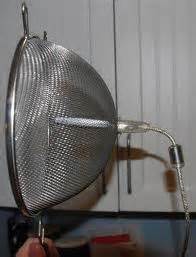 Many laptops, mostly old models, do not support wireless network.
Many laptops, mostly old models, do not support wireless network.
It so happens that the internal Wi-Fi antenna is not able to catch the signal due to its weak characteristics.
Adapters for the PCMCIA bus are available specifically for this case. A distinctive feature of the products is the ability to connect an external antenna. This dramatically improves the quality of reception.
Why is this option good mainly for indoor use? Increasing the length of the wire dramatically reduces the efficiency of the system.
This is why the antenna for Wi-Fi adapter often looks like his appendage. This is such a rod sticking out of the board. Increasing the cable length dramatically reduces sensitivity.
However, sitting under the window it is possible to place the antenna in the window. This will increase the range of reception.
In the Russian Federation, an electromagnetic network operating outside the building, a production area exceeding the signal power, a fixed threshold, must be registered. The law contains a long series of exceptions regarding the height of devices, the destination. A number of obstacles, double interpretations explain the opinion that has developed among hardware developers: a long-range Wi-Fi antenna must be passive. Certainly reduces energy costs, makes the electromagnetic background of the area more favorable.
How to make a passive radiator amplify a signal has been known for a long time - the radiation pattern is supplied with one or two sharply marked directions: the main part of the energy will be limited.
Reminds a narrow river bed. While the banks are far from each other, the flow is calm. It is necessary to hold the flow of a narrow sleeve, the water rages, flows faster, the speed increases.
Wi-Fi long-range antenna is guided by a similar principle, forwarding the power reserve in the right direction. The gain, expressed as isotropic decibels (dBi), characterizes the property of the radiator - to increase the energy density of individual directions.
Immediately there is a restriction - the coverage area is sharply narrowed. Dignity is obvious - full liquidity through the eyes of the law, since total radiated power falls under the restrictions.
Who needs a higher signal level, buy additional amplifiers, legally legitimize the purchase of a fixed order. Avoid forgetting: some transmitters are subject to EIRP restrictions. The parameter from a completely innocuous access point can make an object subject to mandatory licensing. Represented by the product of the total supplied antenna power gain.
For example, with some power emitted by an omnidirectional antenna, a license is not needed. When replacing a narrow model with a model, a situation may arise when the EIRP goes beyond what is permitted. The probability is higher, the greater the gain of the product.
The issue was discussed in detail, since not one organization was penalized for non-compliance with the elementary requirements imposed on wireless networks. Outdoor antenna Wi-Fi can become a real stumbling block ill-considered use.
The principles of long-range antennas
The implementation of narrowed radiation patterns moves in two ways:
- The use of reflectors special form.
- Creating phased arrays.
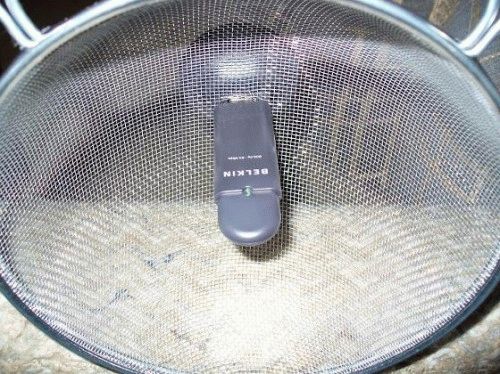
Reflex antennas
The scientific terms translated into understandable to most people do not look frightening. Reflector - reflector. Satellite dishes use part of the surface of a paraboloid with a radiator placed in focus. The school law of optics is used: rays that fall perpendicular to the lens are collected by one point. The parabolic antenna reflector acts as a lens of electromagnetic waves.
For an engineer, the further course of thought is obvious, most commoners ask a curious question: if the rays fall in parallel, how is the phenomenon related to the transmission, the directivity pattern?
The properties of the antennas are identical to both directions of movement of electromagnetic waves. Radiated energy will be propagated by parallel rays, causing a narrowing of the radiation pattern. The flow goes in the direction perpendicular to the aperture of the reflector, the range of the Wi-Fi antenna increases. To understand this point, it is useful to present a searchlight beating thinly over a long distance.
Antenna arrays
A coherent theory of phased antenna arrays has not been created; practical developments, including the efforts of domestic institutions, will make it possible to achieve excellent results using methods based on empirical research. Scientists use well-known tykovy technique. It looks more reasonable from a theoretical point of view, the essence is as follows.
It has been proven that the emitters located in a certain order form a total radiation pattern that is narrower than individually. It is accepted - there are exceptions - to place in even rows, like the seats of the auditorium. Narrowing occurs in a plane perpendicular to the line of emitters.
The further course of design thought is clear. For example, four plates — called patches — at the corners of a square narrow the radiation pattern in the vertical and horizontal directions. The principle used by the Wi-Fi TP Link TL-ANT2414A antenna.
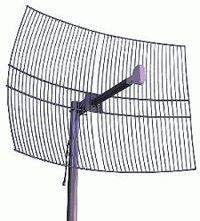
Combined options
The thoughtful combination of a reflector, even rows of emitters gives excellent results. Such is the two-circuit design of the UHF range on square emitters arranged symmetrically with the eight.
Due to the equivalence of two perpendicular to the plane of the location of the direction emitters, the antenna radiates (receives) a signal in both directions. The defect reduces the gain, contributing to the manifestation of the multipath effect, which introduces additional overhead in the communication process. Reflector fixes the problem.
Examples of practical implementation of antennas with a long range
Wi-Fi antennas with parabolic reflector
Outdoor antenna Wi-Fi TL-ANT5830B is equipped with a reflector in the form of a truncated paraboloid. Constructors were interested in the narrowing of the radiation pattern in the horizontal plane (azimuth). Vertically (elevation angle), a large width of the main lobe is obtained, the general direction of energy propagation.
These features are implemented with a reflector, the width of which in the horizontal plane exceeds the vertical dimension - height. The selected form of the reflector will effectively compress the flow in azimuth, giving the elevation angle more room for the receivers of subscribers.
Such outdoor Wi-Fi antennas are suitable for two-way communication, unsuitable for broadcasting. Special attention will be paid to the value of EIRP, the product gain is 30 dBi.
Reception and transmission are conducted at a frequency of 5 GHz, the reflector is made mesh, reducing weight, wind load.
Along the way, it is worth mentioning two features of antennas with a narrow radiation pattern:
- The stability of the connection makes adjustments to the wind. Despite the significant removal of subscribers, a small angular size, gusts of air masses, rocking the product, can cause a temporary loss of signal.
- Adjusting the exact position of the plate is difficult. Narrow beam should fall on the subscriber. In addition, direct visibility is required to organize the channel.
The range of the Wi-Fi antenna with a parabolic reflector is the maximum possible.
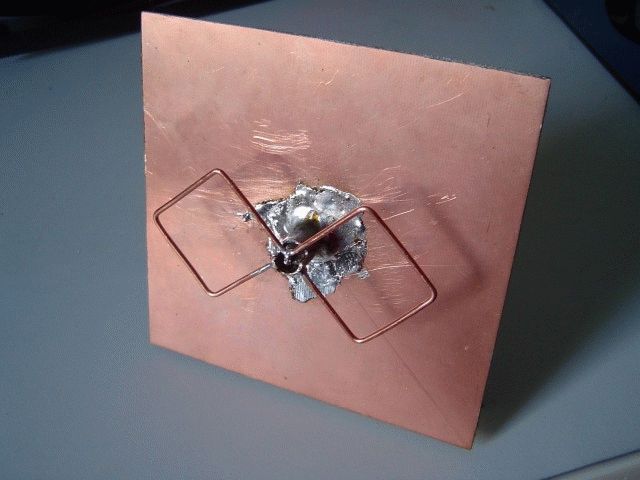
Phased Wi-Fi arrays
The TL-ANT2414A model achieves a narrowing of the radiation pattern with two horizontal rows of patches of four pieces each. In-phase emitters act as a single unit, receiving and sending a signal.
Wi-Fi router with external antenna TL-ANT2414A narrows the broadcasting field to an area within the front lobe of the radiation pattern. Useful when deploying a network in an elongated stadium, the territory of the factory.
The range of the construction will be much inferior to parabolic models, the installation process, settings are relatively simple, it is permissible to broadcast to a group of subscribers, the plates form a channel with two ends.
Wi-Fi antenna power level
Each electronic product is designed to skip the permissible power level. Exceeding the threshold allowed by the manufacturer disables the device much faster. The mode of operation is invalid. Powerful Wi-Fi antenna emits tens of watts. For comparison, the registration threshold of devices in the range is in the region of 200 mW (one fifth of one Watt).
Normal adapter works with valid (without registration) signal levels. Some consumers need to provide additional power requirements. You must purchase a special amplifier. The cost of the device is $ 500 and higher, depending on the specific model.
The range of the system increases, the reception becomes more confident. The equipment must obtain a license. Expertise is engaged HRCHC where submit an application for research.
Home conditions
Laptops, mostly old models, do not support wireless networks. At times, the internal Wi-Fi antenna is unable to pick up the signal due to its poor performance.
Specially manufactured adapters for PCMCIA buses. A distinctive feature of the products is the ability to connect an external antenna. Dramatically improves the quality of reception.
Why is the option good for indoor? Increasing the length of the wire dramatically reduces efficiency. Antenna for a Wi-Fi adapter often looks like an appendage. A stick sticking out of the board. Increasing the cable length dramatically reduces sensitivity.
Sitting under the window, it is possible to place the antenna in the window, increasing the reception range.



